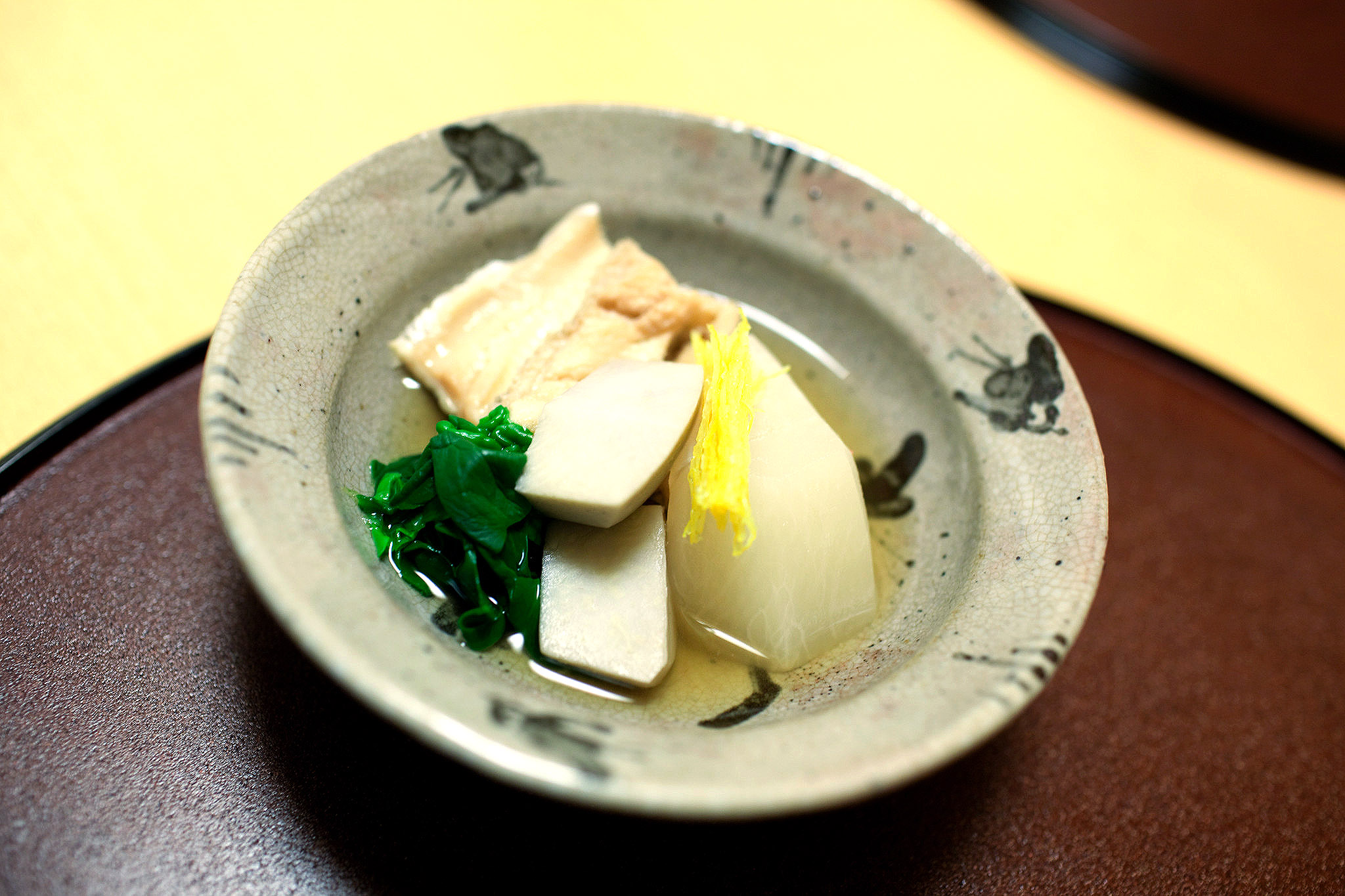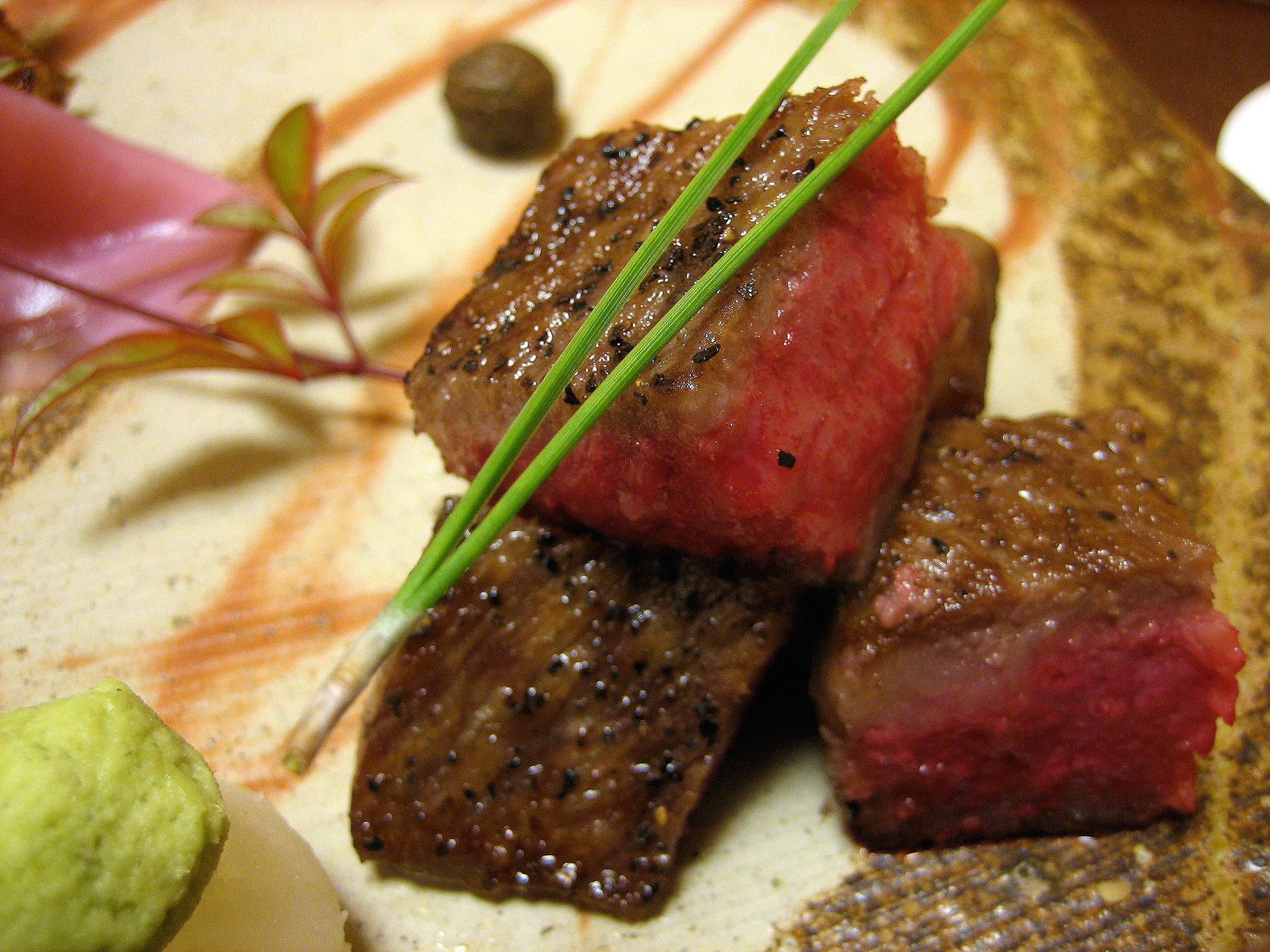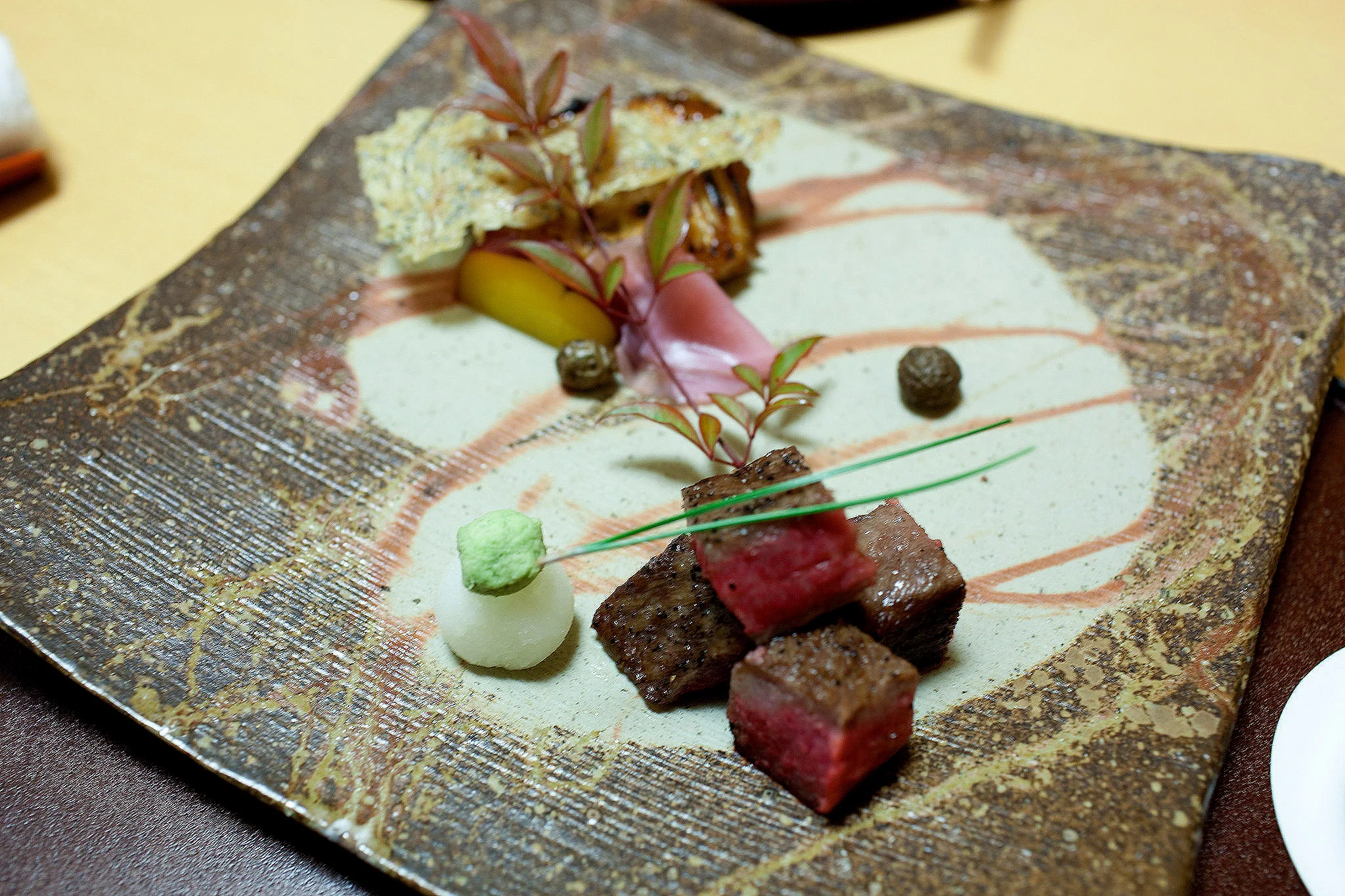Koju
The simplicity and minimalism of Japanese cuisine never cease to amaze me. Particularly with traditional kaiseki, sauces and spices practically don't exist. Instead of flavoring the ingredients in a dish with external condiments, ingredients are chosen for their own intrinsic flavors. This ingredient-focused approach took a bit of getting used to; in fact the first time I tried kaiseki, I didn't like it. I thought the flavors were dull, repetitive, and boring. But the more I ate it and the longer I spent in Japan, the more I began to appreciate it. My barometer of flavor reset. Instead of loud spicy Thai cuisine full of spices and herbs, or very sweet and sticky Shanghainese cusine, Kaiseki lies flat in the middle: nothing too sweet, salty, or sour. It is a cuisine of modesty and humility where the natural flavors of the ingredients are put on a pedestal to shine.
Located in a quiet side street of flashy Ginza, Koju, the restaurant of chef Toro Okuda, really epitomizes the beauty that can come out of a meal where the chef takes a step back and lets the ingredients speak for themselves. Chef Okuda's unrelenting quest for the highest quality ingredients is what lets this restaurant work.
When I stepped into Koju, I no longer felt like I was in Tokyo. I could no longer hear the sounds of traffic for one, but the restaurant itself had a volume just below a whisper. Even though it was full it sounded completely empty. A lot of this has to do with the private room setup. Most of this restaurant's seats are in private tatami rooms separated by rice paper doors. This creates the utmost sense of privacy and serenity which really lets diners concentrate on their companions and the food.
We settled into our room, cleansed our hands with a hot towel, and began the meal.
Abalone, king crab, and wakame seaweed with vinegar jelly - The subtle acidity of the jelly was the base for this dish, with the abalone and king crab glistening through. The shellfish was so fresh that it was actually the sweet part of the dish. The balance between the sweetness of the shellfish and the subtle acidity of the jelly and yuzu slice made this dish phenomenal. The clump of seaweed offered a slight vegetal bitterness that helped to temper the acidity of the jelly.
Halfbeak clam, small scallop, and Japanese green leaves - A small salad of clam and scallop. The softness of the small scallops against the firmer chewiness of the halfbeak clam was particularly interesting, almost playful to chew. The greens added delicate crunch. This was seasoned with a hint of vinegar.
Japanese clear broth soup made from bonito flakes, with lobster and Japanese turnip - This was an incredible dish. The clear broth (dashi) course in any kaiseki meal is never meant to strike diners with awe. Its flavors are intentionally mellow and subdued. Rather, it is a time to step back and reflect on the quality of the ingredients and the subtle flavors that would not otherwise be detectable were the ingredients heavily spiced. Here, while there was no additional sugar added, the turnip and lobster tasted sweet! The mix of the turnip and lobster with the salted broth presented lobster in a light I had never seen it: it almost tasted like honey. The broth itself was exquisite, pristine with just a hint of milky-white.
Sashimi course with tuna, flatfish, and oval squid - Thin slices of unbelievably fresh fish served with lime, salt, fresh wasabi, and daikon radish. In Western meals there is typically a crescendo building from amuse bouche, to appetizer, to the big main course. Even tasting menus increase in progression with each dish most intense in flavor: soup, then fish, then meat, then dessert. In Japanese kaiseki cuisine there is no such build-up. All dishes are equal in intensity and portioning. This is particularly interesting because after the clear broth soup my palate was in neutral: this could be the beginning of the meal, the middle, or the end, and I would still be able to taste the ingredients in an unimpeded fashion. This really let me appreciate the sashimi despite it being half-way through the meal. The fresh wasabi was very finely grated and had a wet texture to it. The oval squid in combination with the salt and lime was exquisite -- each bite made a "snip" sound in my mouth a texture for squid that for whatever reason, I have only tasted in Japan.
Koju, Tokyo - Tuna
Grilled Japanese beef with Japanese Spanish mackerel - Cubes of grilled Japanese beef lightly salted and served with mackerel and fresh wasabi. The beef was cooked rare and left cool to the touch in the inside making it more like charred beef sashimi. This light cooking is what let it stand alongside the mackerel. The lean beef was served with no sauce letting its natural grass-fed flavor stand on its own. Another great course.
Turnip, saltwater eel, and taro - This saltwater eel (anago) was simmered with lemon peel and turnip in a dashi broth. Much like the previous clear soup this was a time to reflect on the quality of the ingredients and the perfection of their cooking. The eel was soft and moist making it tricky to pick up with my chopsticks, though delicious. The lemon peel brightened the dashi without adding sweetness. The turnip, almost like a piece of bread, soaked up the sum of all the constituents' flavors.
Grilled freshwater eel, white rice, miso soup, and Japanese pickles - Freshwater eel (unagi) lightly braised in a traditional sweet sauce (kabayaki no tare). This was the best freshwater eel I have ever tasted in my life. Period. No dryness whatsoever. The kabayaki sauce brought out the natural sweetness and maple-like flavor of the eel without changing its natural flavor. The acidity of the Japanese pickles contrasted against the sweet eel. Alternating bites between the pickles and the eel made my palate go back and forth between hints of sweet and salt, the white rice reseting my mouth between each bite. This understated and simple course was the highlight of the meal for me.
Fruit jelly with yuzu sorbet and custard pudding, flavored with Japanese roasted tea - A simple dessert of a fruit custard alongside a spoonful of bright yuzu sorbet. The sorbet was barely sweet; there was very little sugar added. Rather it tasted like the smell of yuzu: clean and refreshing. This marked the end of our meal.
This meal is the best kaiseki meal I have ever experienced. Every single dish had a profound impression on me.
In some ways, experiencing a kaiseki meal is like walking into a dimly-lit room after being outside in the sun. At first it's really difficult to see; it can even be a bit frustrating to navigate. But as the eyes adjust and rebalance it is the outside that begins to seem too bright.
At the end of the meal I was astounded at how good I felt. Not only was I blown away by how some of these ingredients tasted, but I felt perfectly sated and calm. It was as if in addition to eating this great meal I had been meditating for the past three hours. I just wanted to do it again.



















